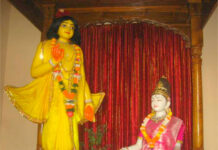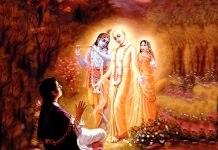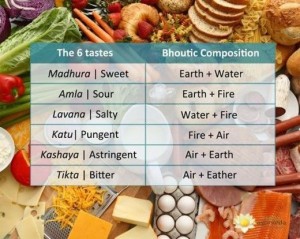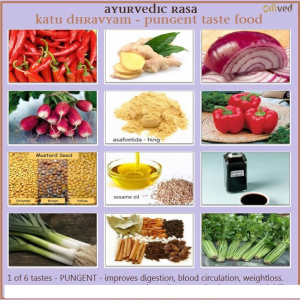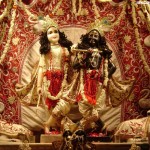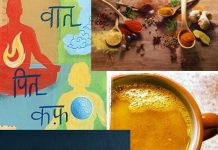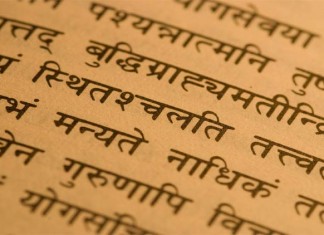Image credit Pinterest
As we continue our journey through the shad rasa (six tastes) in Ayurveda, we will explore the taste that garners either a love or hate reaction: pungent. The pungent taste in Ayurveda is comprised of the elements of air (vayu) and fire (agni). Pungent increases Vata and Pitta doshas and decreases Kapha dosha. The virya or aftertaste of pungent is heating. This further increases Pitta. The vipak or post-digestive effect of the pungent, bitter, and astringent tastes is pungent.
In Sanskrit, the pungent taste is known as katu rasa. Of the shad rasa, the pungent taste in Ayurveda is the most heating. This is likely why people have such extreme reactions to it.
The pungent taste kindles the agni (the digestive fire), and assists with proper absorption, opens the blood vessels and promotes circulation by moving stagnated blood. It helps to discharge oil and sweat and removes phlegm from the body, cleanses the mouth, and thus reduces congestion. The pungent taste in Ayurveda stops itching, helps to kill intestinal worms, and reduces ama (toxins in the body), Due to its stimulating nature, pungent reduces gas and inflammation, causes tearing, raises one’s body temperature, and promotes sweating. Additionally, the pungent taste relieves pain and muscle tension.
Image credit Pinterest
The pungent taste in Ayurveda can be found in hot peppers, asafoetida (hing), garlic, ginger, bay leaves, leeks, radishes, and in all volatile oils. The pungent taste is used in cooking to enhance taste, particularly with spices. Some of these spices are: basil, black pepper, cardamom, cayenne pepper, cinnamon, cloves, coriander, cumin, horseradish, mustard, onions, oregano, peppermint, rosemary, and spearmint.
Ayurveda advises that we take all things in moderation. While we require all six tastes in an Ayurvedic diet, we do not need any of them in excess. Overuse of the pungent taste can lead to dizziness, emaciation, fainting, a burning sensation in the throat, thirst, ulcers, as well as generally diminished strength.
Psychologically, the pungent taste in Ayurveda promotes boldness, and extroversion. When used in excess, it creates anger, hatred, and violence.
Each of the shad rasa correlates to various phases of digestion. The first stage of digestion is in the mouth and the stomach; this is moistening, so it relates primarily to the sweet taste. The stomach is the seat of Kapha dosha. Sweet is related to the upper part of the stomach. The second stage of digestion is in the stomach and in small intestine. The small intestine is the seat of Pitta dosha. Sour is related to the lower part of the stomach, near the pyloric valve. This is heating, as it’s dominated by the sour or acidic taste. The third phase of digestion is in the colon. The colon is the seat of Vata dosha. This is drying and is dominated by the pungent taste.
Ayurveda advises that we eat right for our constitutional imbalance, or our vikruti. A personalized Ayurvedic consultation will guide you to how to eat right for your body type.


